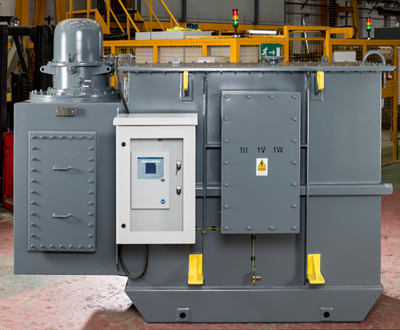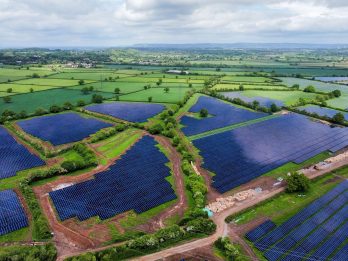Being Smart About Energy – The Smart Grid & Smart Transformers

We’re living in a world where the constant interconnectivity of technology and appliances is a fast growing and unstoppable trend. We’re seeing the world of consumer electronics being vastly altered by “The Internet of Things”, creating smart devices that build interconnected networks of fitness bands, smartphones and even fridges. The desire to have everything talk to each other to make our lives easier is seen as one of the great developments of our era, but while we enjoy telling our watches to turn on the TV, a more fundamental shift is happening in our National Grid.
The proliferation of Smart Metres by the UK Government is a sign of how the way we receive and use power is changing. Efficiency is the new watchword, not just in making sure we use only what is necessary, but also that we make the most of it. In order to achieve this we have to do more than simply hook up our metres to our phones, we have to fundamentally change the way our infrastructure works. The National Grid is dealing with more diverse and fragmented energy sources than ever before, with the addition of wind and solar providing clean, if intermittent energy, and micro grids creating lots of unpredictable problems. This means that a more finessed manipulation of our supply is required, and it’s here that smart technology goes from an entertaining phenomenon into a radical new way to save power.
 Voltage Management
Voltage Management
Voltage management is nothing new to the world of transformers, our Wilson e2 has a fantastic tap-based solution that can help you increase your energy efficiency, and the Wilson e2+ even has dynamic systems in place, but as smart technology develops so too does our accuracy. If we can get your transformer talking to the rest of the grid and to the power consuming devices in your system, you can create a network that optimises every volt. Instead of having a “set and forget” default in our distribution network, we could have a smart system that brings down the overall energy usage simply by collecting and acting upon better information. Over time the transformers themselves will be able to make these decisions independently, creating a self-monitoring network that could reduce our energy demands in a massive way.
But it’s not just lowering the consumption that makes the smart transformer so appealing, they can also prevent overvoltage, supplying devices with the actual voltage they need rather than sending a potentially damaging surge. This method can also be applied to power fluctuations, making the transformer an additional line of defence against faulty equipment in the network. Plus, with the constant reporting between devices, errors and faults can be logged and traced with greater ease, making maintenance a much simpler task.
Right now Smart Transformers are still in development, with coordination along the grid still being required to help achieve the truly intelligent infrastructure we need. The good news is that the work is being put in, and it’s mutually agreed that the smart grid is a massive win for everyone involved, reducing energy prices and making a national grid that’s easier to maintain and monitor. If you’re interested in learning more about the smart grid the UK government’s section on the smart grid makes for some excellent additional reading and you can check out this helpful set of videos from the US Department of Energy.
Want to stay informed about Transformers and our upcoming events? Sign up to our newsletter:
Sign Up Now 9 Jun 2017
9 Jun 2017IETF: Industrial Energy Transformation Fund – Phase 3
Industrial emissions account for around 18% of UK emissions. To reach the Net Zero target in 2050, industrial emissions need to fall by around 90% from today’s levels. Industrial Energy Transformation Fund (IETF) launched Phase 3 of industrial grants on Monday 29 January 2024, with the closing date on Friday 19 April 2024, and aims […]
 23 Feb 2024
23 Feb 2024Guide to Replacing Transformers
The third part of the Intergovernmental Panel on Climate Change (IPCC) Sixth Assessment Report (AR6) was published earlier this month. Scientists warn that limiting global warming to 1.5°C is beyond reach but restricting temperature rise to no more than 1.5C to 2C could be the range that will minimize the likelihood of reaching critical environmental […]
 22 Apr 2022
22 Apr 2022IETF: Industrial Energy Transformation Fund FAQ
The Industrial Energy Transformation Fund (IETF) was designed by the UK government to encourage energy-intensive businesses to cut their carbon emissions and reduce their energy waste by switching to energy-efficient low-carbon technologies. A budget of £315 million was allocated by the government to be spent through the IETF. BEIS manages England, Wales and North Ireland’s […]
 4 Apr 2022
4 Apr 2022










